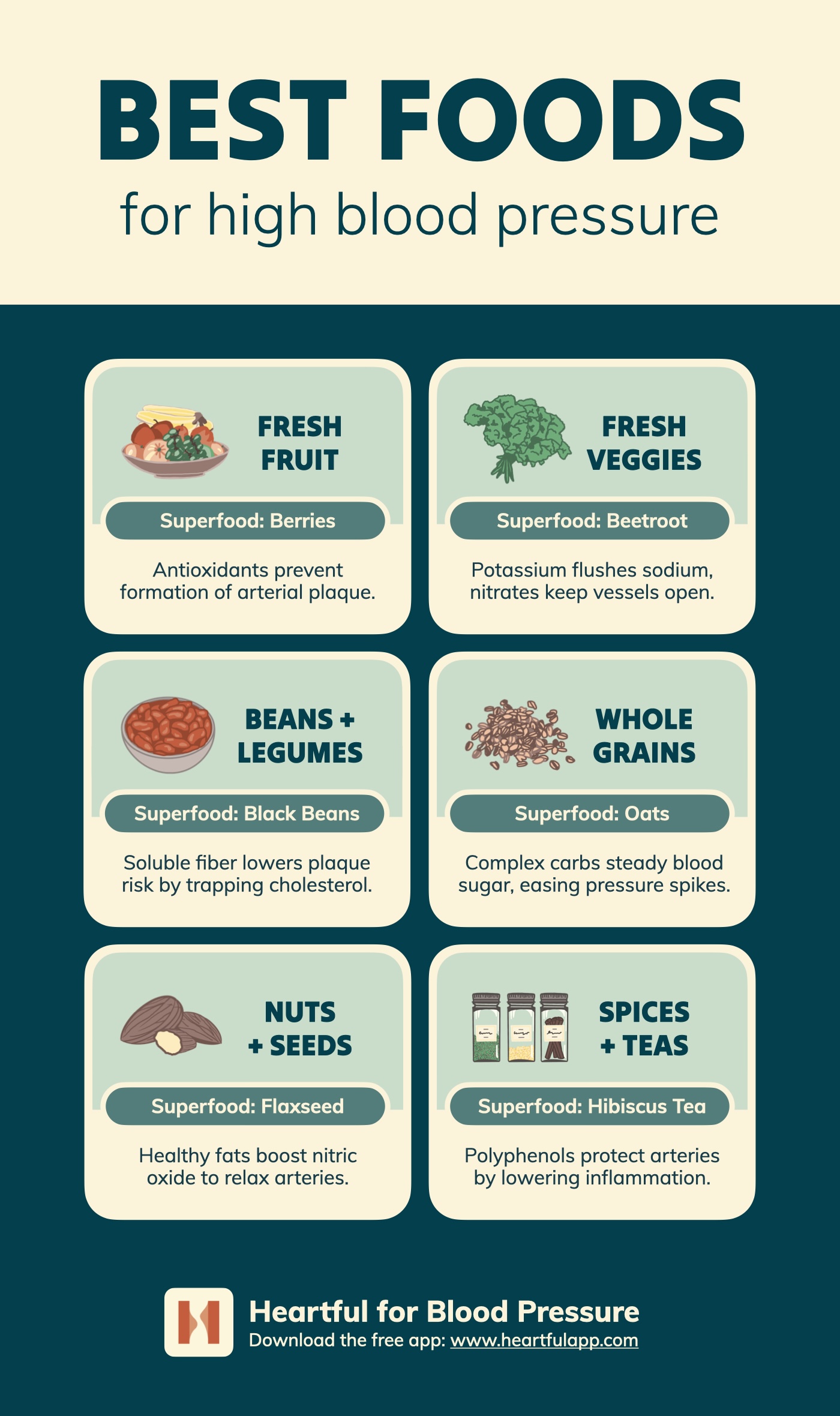
When eating for heart health, it’s important to follow three primary rules:
Minimize your intake of foods that increase inflammation, oxidative stress, and fluid retention
Maximize your intake of foods with nutrients that reduce inflammation, oxidative stress, and fluid retention
Keep your overall intake at a reasonable level to prevent overeating and excess weight gain (which can add stress to the arteries)
Let’s take a closer look at the most fun part of this equation: maximizing your intake of superfoods. The top diets for heart health always have a primary focus on whole, unprocessed plant foods. Each category of these nutritional wonders has important benefits that can help keep your heart healthy.
Fruit is packed with heart-healthy benefits, like antioxidants, vitamin C, fiber, and potassium. This combination of nutrients helps to prevent arterial plaque from forming, protect existing plaque from rupture, keep the arteries more flexible and open, and flush excess sodium from the body.
Fruits sometimes get a bad reputation for containing sugar, but the natural sugar found in fruit is actually not dangerous to health. That’s because sugar from a whole fruit is part of a larger package that includes fiber and other nutrients, causing the body to process it differently. Fruit is a critical part of a healthy diet, and consuming it daily has even been proven to protect against type 2 diabetes, not contribute to it.
When it comes to vegetables, more is more! These nutritional gems offer a wide array of heart health benefits, and it’s important to consume several different types each day. Some are high in nitrates, which can relax the arteries. Others are high in magnesium, which helps to regulate sodium balance and reduce pressure. Vegetables are also a critical tool for weight management, which also contributes to a healthy blood pressure. They have a relatively low calorie density and are packed with fiber to help you feel fuller for longer.
The relationship between fruit and vegetable intake and hypertension appears to be what researchers call an “inverse dose response” relationship, meaning the more fruits and veggies you eat, the lower your blood pressure is likely to be. Studies have found that the highest intakes of fruit and vegetables are associated with the lowest risk of hypertension.
Beans and legumes help to lower blood pressure in many of the same ways that fruits and vegetables do. They are high in potassium, which helps with fluid balance. They are high in magnesium, which helps relax the arteries. They are high in antioxidants, which helps reduce oxidative stress, protecting the endothelium and preventing plaque formation. They are also high in fiber, which can help you feel fuller longer and contribute to maintaining a healthy weight. And with all of these benefits come little to no negative side effects or health risks.
Just like fruits and veggies, beans and legumes have an inverse “dose response” relationship with hypertension: the more you eat, the lower your risk. Those who eat the most legumes were reported to have 44% fewer cases of hypertension, but even a modest intake of 2-3 oz per day has been shown to help.
Whole grains are incredibly beneficial to your overall health, but when it comes to blood pressure, they can be a game changer. They provide the right types of fiber to lower cholesterol, complex carbs that aid in slow digestion and blunt blood sugar spikes, and even contain phytochemicals that can help lower inflammation.
In one randomized controlled trial, people with hypertension who were taking medication to treat it were randomly assigned to consume about 5 oz of oatmeal product each day for a period of 12 weeks. At the end of 12 weeks, 73% of the participants who were eating the oatmeal products were able to stop or reduce their medication by half. On top of that, they also experienced a staggering 24-pt drop in cholesterol levels.
These foods may come in tiny packages, but they pack a huge nutritional punch. Their magic lies in their healthy, unsaturated fats. These healthy fats are widely considered to be protective for heart health, and for good reason. When healthy fats are added to a meal, it helps your body absorb all the nutrients of that meal more effectively. They can also help to balance your cholesterol levels and lower inflammation.
Flaxseeds in particular have yielded impressive results in dietary intervention studies. In one particularly poignant study, hypertensive participants who added just one ounce of flaxseed to their daily diet for 6 months saw an average blood pressure drop of 15 points. The researchers from this study concluded that the decrease achieved by flaxseed was “comparable to many drugs” designed to treat hypertension.
Spices and teas offer a wide variety of heart health benefits, which is why it’s important to consume an array of them! Some act as natural vasodilators, helping the blood vessels stay more open and relaxed. Others help to lower LDL cholesterol, reduce oxidative stress, or work their anti-inflammatory magic.
Herbal teas, hibiscus in particular, have shown particular promise in the area of blood pressure control. Just like flaxseed, hibiscus tea has been praised by researchers for its ability to induce blood pressure reductions similar to those resulting from medication, with one review citing an average reduction of 7.5 pts in systolic blood pressure and 3.5 points in diastolic.
Discover more insight like this in the “Heartful for Blood Pressure” app, free for everyone.